- Share
- Like
- Tweet
- Digg
- Tumblr
- VKontakte
- Love This
- Odnoklassniki
- Meneame
- Blogger
- Amazon
- Yahoo Mail
- Gmail
- AOL
- Newsvine
- HackerNews
- Evernote
- MySpace
- Mail.ru
- Viadeo
- Line
- Comments
- SMS
- Viber
- Telegram
- Subscribe
- Skype
- Facebook Messenger
- Kakao
- LiveJournal
- Yammer
- Edgar
- Fintel
- Instapaper
- Copy Link
In the listed ’Radio House’ of Copenhagen, by renowned Danish Architect Vilhelm Lauritzen, the Danish National Museum has recently re-opened its vast collection of historical musical instruments. The elegant modernistic building from the 1950’ies have gone through an extensive refurbishment, respectfully carried out to emphasize the unique character of the listed building’s materiality and detailing. ADEPT was commissioned to refurbish the space by adding four musical spaces, each tailored to a specific instrument.
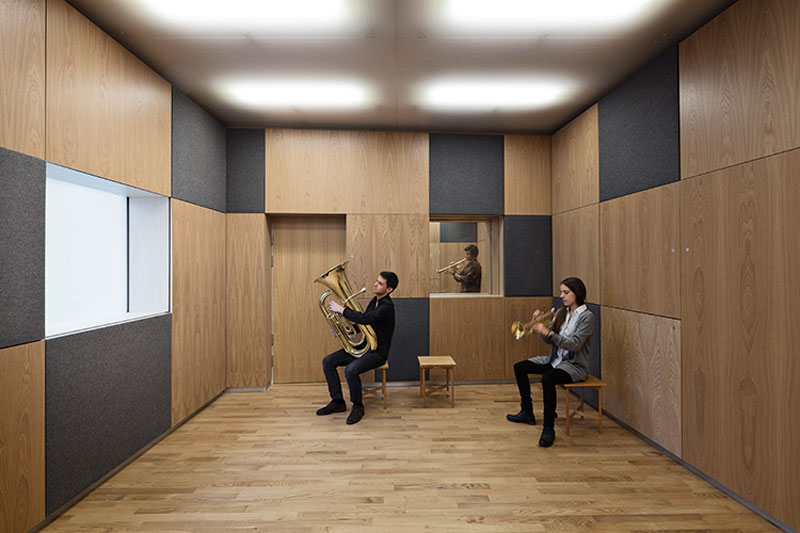
Image © Laura Stamer
In close collaboration with Creo Architects and Niras Engineers, ADEPT developed a concept that includes four delicately detailed sound spaces as part of the collection’s educational program. The four sound spaces known as ‘The Sonorous Museum’, were refurbished in great respect of the original building, showing a classic approach that preserves the original design intentions, yet adding contemporary life and modernity to it.
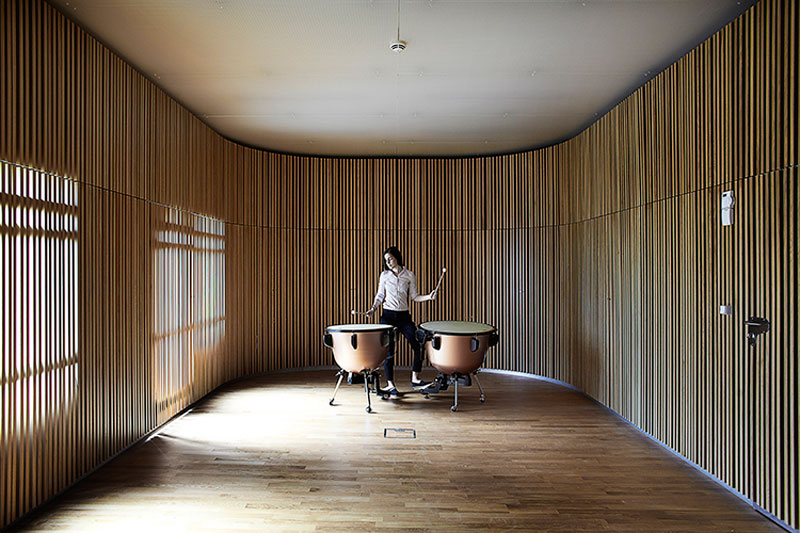
Image © Kaare Viemose
The design team has drawn inspiration from the unique architecture of the Radio House. The vision of Vilhelm Lauritzen was reinterpreted in a modern way through a play of colour, pattern and rhythms.
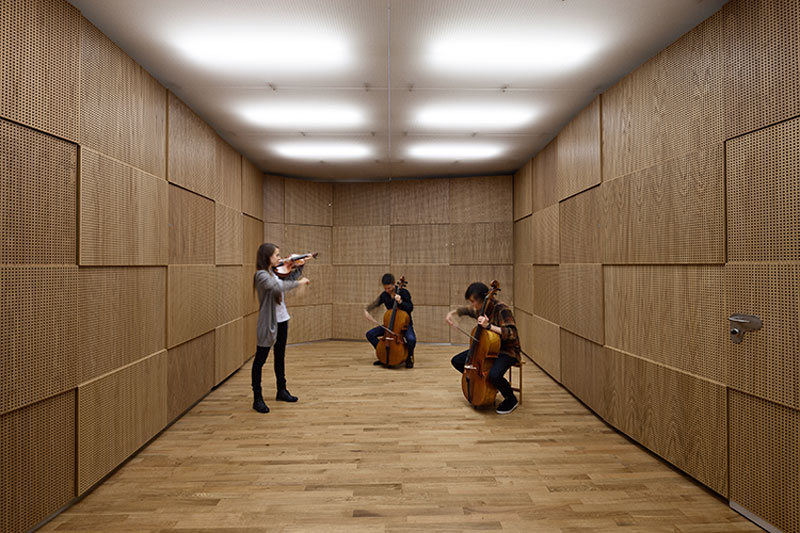
Image © Laura Stamer
The exhibition design is build up around the guest’s physical movement through musical history – a movement communicated in a delicate balance between exhibited objects and instruments, graphic illustrations and listening stations interacting with the museum guest. The design alternates between glass showcases making the instruments seemingly float in the air and open tableaus showing larger instruments.
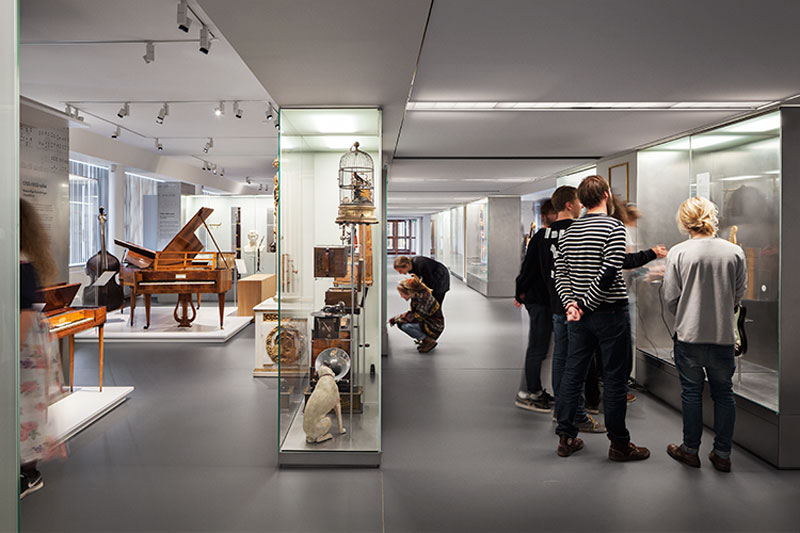
Image © Laura Stamer
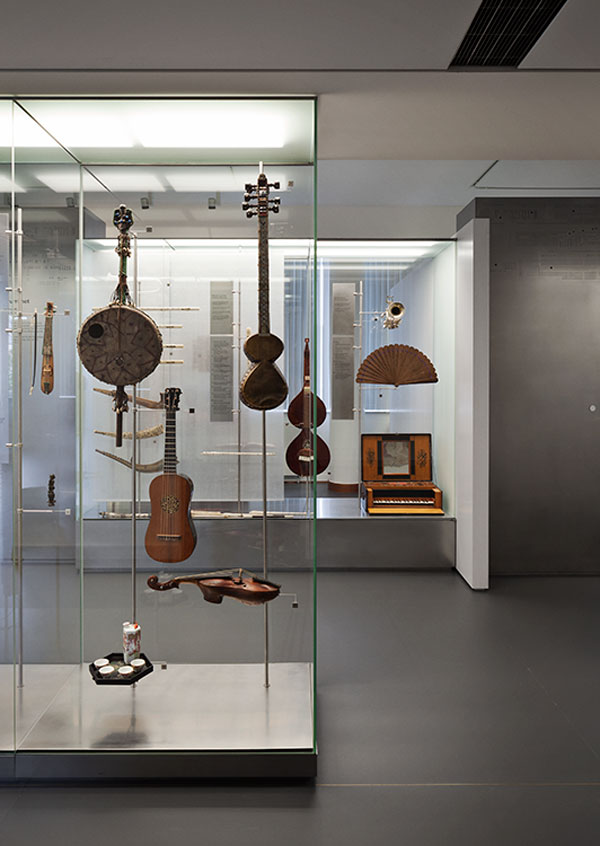
Image © Laura Stamer
’The Sonorous Museum’ is comprised of four sound regulated studios, acoustically adapted to a specific instrumental group: strings, brass, percussion and mixed instruments. The four spaces are designed as interactive classrooms in order to provide visiting school classes with a hands-on experience of the classical music instruments and their sound spectre.

Image © Laura Stamer
The four spaces are designed as spatial variations on the same aesthetic theme. Each of the spaces are clad in wood veneer, designed to meet and create the optimal acoustic setting for a specific instrumental group. From the vertical lamellae of the percussion space, the seemingly vibrating cassettes for strings to the graphical clarity of the brass space, the four spaces stands out as both contemporary modern and yet very classic in their expression – as a simple and precise continuation of the intended spirit in Vilhelm Lauritzen’s listed master piece.
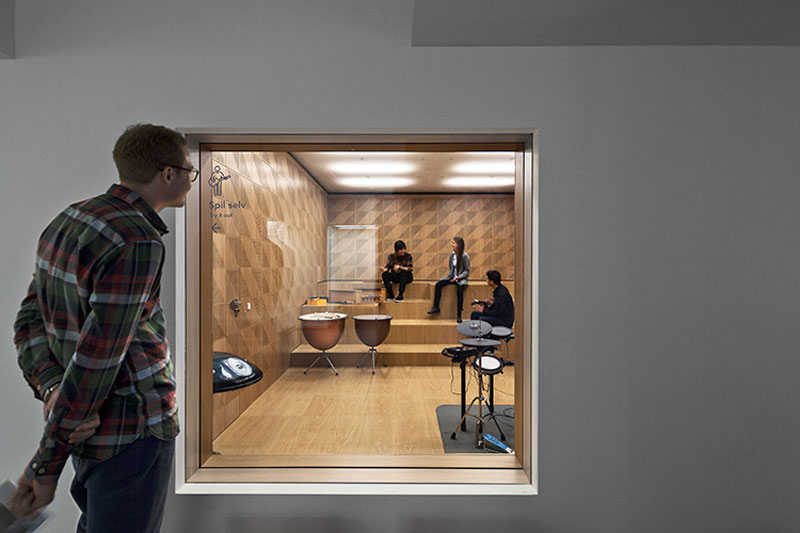
Image © Laura Stamer
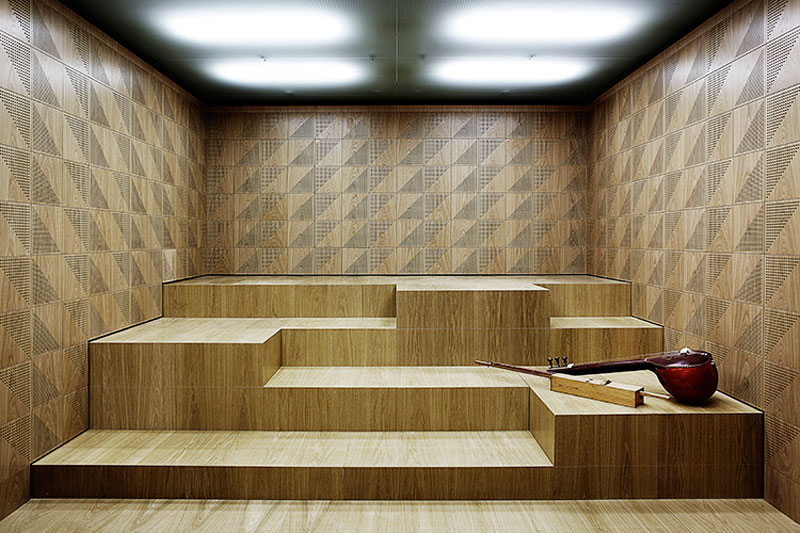
Image © Kaare Viemose
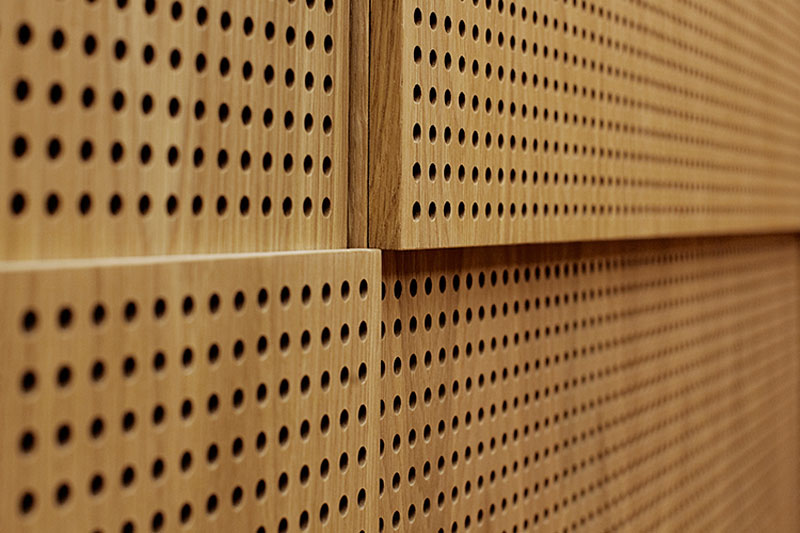
Image © Kaare Viemose
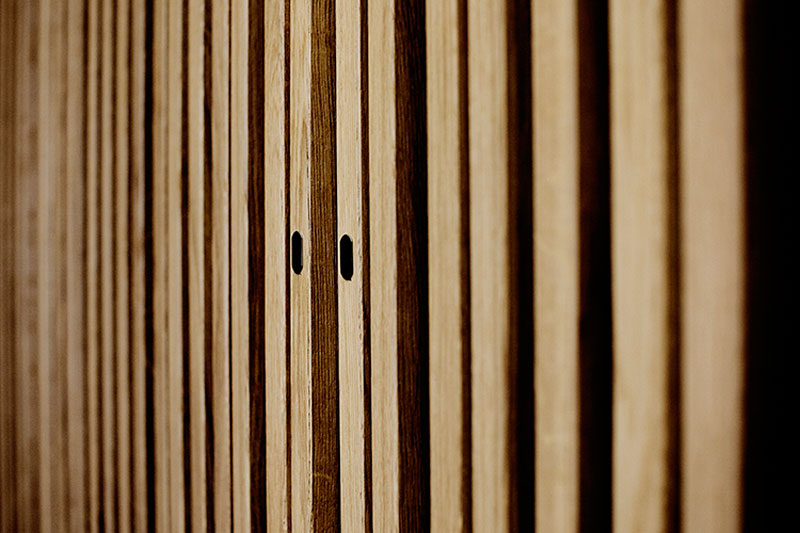
Image © Kaare Viemose
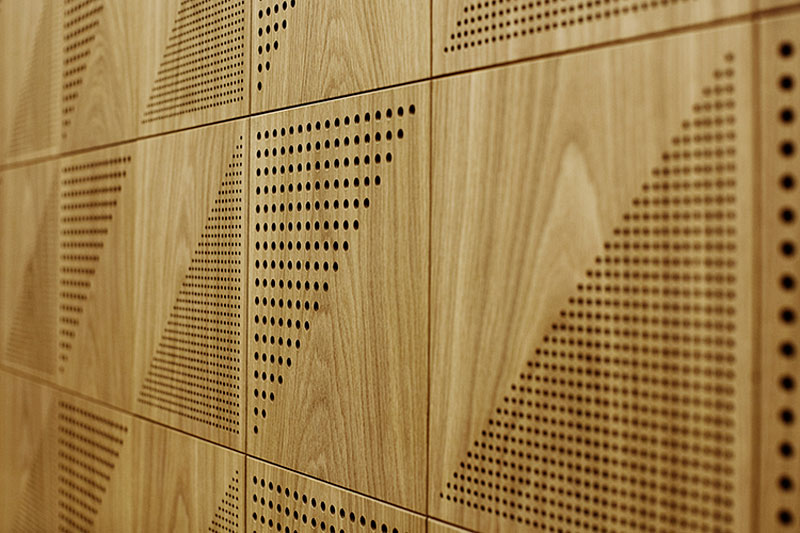
Image © Kaare Viemose
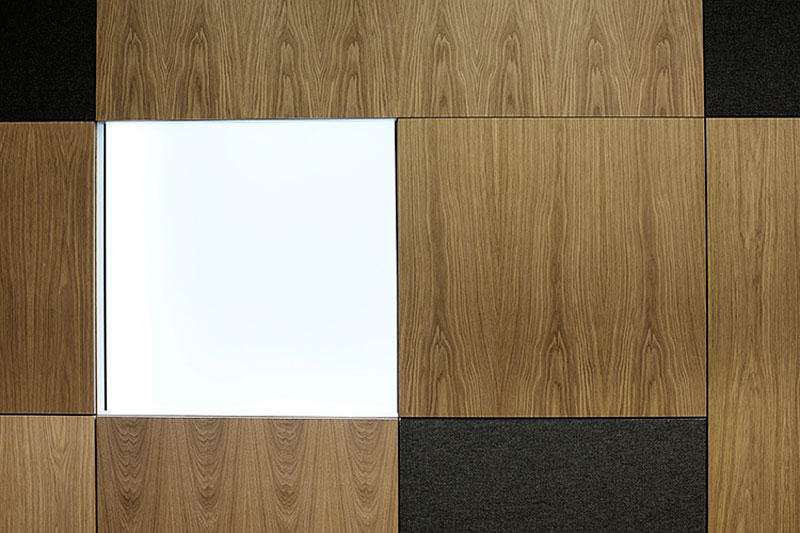
Image © Kaare Viemose
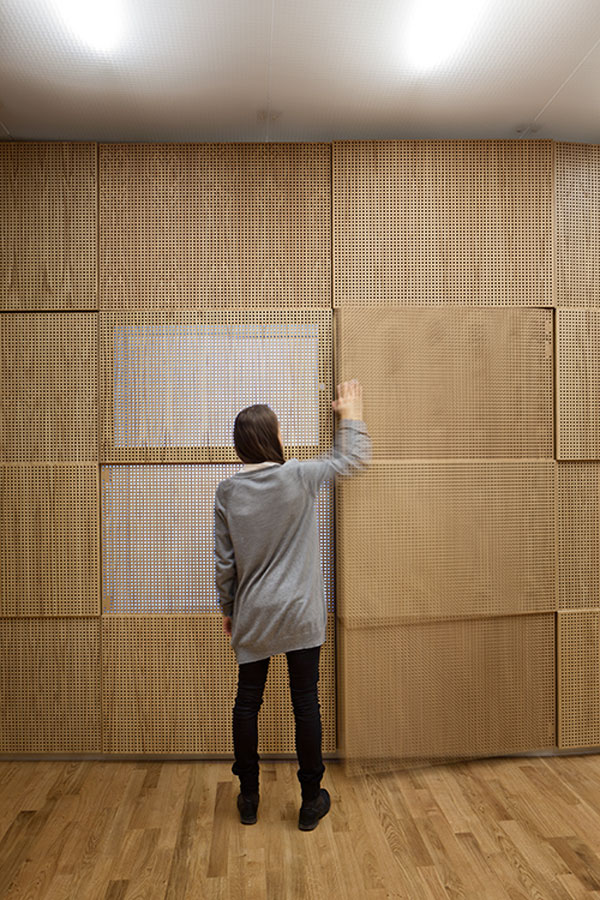
Image © Laura Stamer
Facts:
Architects: ADEPT
Collaborators: Creo Architects, Niras
Year: 2014
Location: Copenhagen, Denmark
Photographs: Laura Stamer, Kaare Viemose
*All images and information courtesy of ADEPT.
